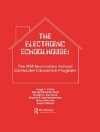Your desk reference for success with exceptional students
Today’s teachers, especially the many who work with students with special needs, are pressed to know a little something about everything. Expertise is needed in different content and pedagogical areas, but knowledge of different types of disabilities is required as well. Wendy Murawski and Kathy Lynn Scott have assembled another reader-friendly What Really Works resource full of experiences and evidence-based practices to empower any educator.
Each chapter is presented in an easy-access and practical format suited for busy professionals. The editors and authors examine how special educational needs affect
- Content areas like reading and math
- Specialization areas like autism and learning disabilities
- Pedagogical areas like culturally responsive practices and accommodations
- Other critical areas like legal issues, behavior challenges, and home-school collaboration
As education trends promote the inclusion of students with exceptionalities, this book is the perfect resource for teachers and administrators who need to know what works…and what doesn’t.
Innehållsförteckning
Foreword – Ann Turnbull
About the Editors
About the Contributors
Introduction
Section I. What Really Works With Content
Chapter 1. Getting Past “I Hate Math!” – Sarah A. Nagro, Margaret P. Weiss, and Jaime True Daley
Chapter 2. Creating a Cadre of Capable Readers – Leila Ansari Ricci
Chapter 3. When Writing Isn’t Easy or Fun: Techniques for Struggling Writers – Katie M. Miller and Sally A. Spencer
Chapter 4. Instructional Strategies and UDL: Making Content Accessible – Ruby L. Owiny, Anne Brawand, and Janet Josephson
Chapter 5. Leveling the Playing Field With Technology – Barbara Serianni, Ela Kaye Eley, and La Toya Cannon
Section II. What Really Works With Instruction
Chapter 6. Culturally Responsive Teaching to Support All Learners – Jacqueline Rodriguez and Stacey E. Hardin
Chapter 7. Thanks for the Memories: Brain-Based Learning at Its Best – Horacio Sanchez
Chapter 8. Positive Behavior Intervention and Supports in the Inclusive Classroom – Jennifer D. Walker and Brittany L. Hott
Chapter 9. Beyond Just “Playing Nicely”: Collaboration and Co-Teaching – Amy Kramer and Wendy W. Murawski
Chapter 10. Progress Monitoring: Your Classroom Itinerary – Kyena E. Cornelius and Kimberly M. Johnson-Harris
Section III. What Really Works With Special Populations
Chapter 11. Addressing the “Invisible Disability”: Supporting Students With Learning Disabilities – Janet Josephson, Anne Brawand, and Ruby L. Owiny
Chapter 12. Search for the Miracle Cure: Working With Students With Emotional and Behavioral Disorders – Brittany L. Hott, Jennifer D. Walker, Audrey Robinson, and Lesli Raymond
Chapter 13. Addressing the Autism Spectrum Disorder ’Epidemic’ in Education – Claire E. Hughes and Lynnette M. Henderson
Chapter 14. Teaching Students With Moderate-to-Severe Disabilities: You’ve Got This! – Dawn W. Fraser
Chapter 15. English Language Learners With Disabilities: Best Practices – Brenda L. Barrio, Pamela K. Peak, and Wendy W. Murawski
Chapter 16. Inclusion as the Context for Early Childhood Special Education – Zhen Chai and Rebecca Lieberman-Betz
Chapter 17. Focusing on Strengths: Twice-Exceptional Students – Claire E. Hughes
Section IV. What Really Works Beyond the Classroom
Chapter 18. It’s the Law! Legal Issues in Special Education – Christine A. Hayashi
Chapter 19. The Importance of Partnerships: School-to-Home Collaboration – Bethany M. Mc Connell and Wendy W. Murawski
Index
Om författaren
Kathy Lynn Scott, Ph D, is the Center Administrative Analyst for the Center for Teaching and Learning at California State University, Northridge. Kathy was trained as an old school darkroom photographer, but she fell in love with all things to do with education. After conducting research on art education and adult education in England and coordinating research on learning disabilities in New Jersey, Kathy jumped from coast to coast, finding a new home with the CTL where she gets to do a little bit of everything related to education. When not acting as the “glue” for the CTL (as Wendy calls her), she’s happiest just relaxing at home, learning to cook new dishes, watching Jeopardy!, and shouting out the (not always correct) answers.












